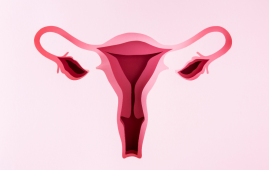Hospitals and health systems across the country closed 2021 dealing with both rising volumes and ballooning expenses, as COVID-19 cases climbed to new heights, causing critical labor shortages and supply chain issues. Many organizations ended the year in better financial shape than at the end of 2020, but overall hospital performance is still stuck below pre-pandemic levels due to Omicron Variant in most areas, finds the latest Kaufman Hall analysis.
Hospital volumes rose throughout December in particular as the contagious Omicron variant caused coronavirus cases to explode. The seven-day moving average of new COVID-19 cases jumped 353.5%, from 86,975 on December 1 to 394,407 on December 31 – its highest level compared to any previous period in the pandemic.
The spike in cases drove a 98.3% increase in COVID-related hospitalizations over the course of the month, with the seven-day moving average of new daily admissions for infected patients rising to 13,083 by month’s end. Luckily, evidence suggests the Omicron variant has peaked in the U.S. and is ready for a decline.
Actual hospital margins remained thin, though they were higher compared to 2020. The median Kaufman Hall Operating Margin Index for the year was 2.5% versus -0.9% for 2020, not including federal CARES funding. With the aid, it was 4% in 2021 compared to 2.8% in 2020.
WHAT’S THE IMPACT?
Hospital margins increased, due largely to increased volumes. The median change in operating margin rose 38% from November to December, not including CARES. With the aid, it increased 49.5%. Compared to before the pandemic in December 2019, however, the median change in operating margin was down 14.7% without CARES. Throughout the year, the median change in operating margin without CARES for all of 2021 was up 44.8% compared to 2020, but down 3.8% versus 2019.
The median change in operating EBITDA margin rose 29.6% month-over-month and performed 28.4% above 2020, but 6.1% below 2019 levels, not including CARES. With the funding, the median change in operating EBITDA margin increased 34% from November, was up 9.4% from 2020, and up 2.4% from 2019.
Volumes, meanwhile, increased among most metrics due to the latest COVID-19 surge. Compared to November, adjusted discharges rose 5.5%, and adjusted patient days increased 3.9%. Emergency department visits also jumped 7.3%, a trend consistent with earlier surges as more patients show up in EDs with potential COVID-19 symptoms.
Compared to the first year of the pandemic, 2021 saw an increase in severely ill patients requiring longer hospital stays due to Omicron. Throughout the year, adjusted discharges were up 6.9%, adjusted patient days were up 11.8%, and average lengths of stay were up 3.5% compared to the prior year. Other volume metrics also saw increases, with operating room minutes up 8.3% and ED visits up 10.9% from 2020.
At the same time, key volume metrics remained below pre-pandemic performance. Adjusted discharges were down 5.6% in 2021 versus 2019, while ED Visits were down 8% and operating room minutes were down 3%.
In terms of hospital revenues, they remained elevated for a 10th consecutive month both year-to-date and year-over-year. Gross operating revenue (not including CARES) rose across all measures. It was up 4.4% versus November, 14.7% for all of 2021 compared to 2020, and 12.1% for the year versus 2019.
Inpatient revenue rose 6.2% month-over-month, was up 11.5% for 2021 compared to 2020, and up 9.9% compared to before the pandemic in 2019. Outpatient revenue also increased, rising 2.9% from November to December and performing 18.5% above 2020 and 11.1% above 2019.
The Inpatient/Outpatient (IP/OP) Adjustment Factor was the only revenue metric to see a slight 1% decrease month-over-month, possibly due to patients and providers delaying outpatient procedures in light of the Omicron surge.
When it came to expenses, hospitals’ struggles were exacerbated by widespread labor shortages and supply chain challenges. Total expense per adjusted discharge decreased 1.8% from November to December but was up 3.5% for the year versus 2020.
Labor expense increases were a major contributor, as tight competition for qualified healthcare workers pushed labor costs up despite lower staffing levels. Labor expense per adjusted discharge was down 2.9% month-over-month, but was up 4.6% in 2021 versus 2020. Meanwhile, full-time equivalents (FTEs) per adjusted occupied bed decreased 0.3% month-over-month, and were down 8.9% for the year versus 2020. Non-labor expense per adjusted discharge rose 0.7% month-over-month, and was up 2.1% for 2021 versus 2020.
THE LARGER TREND
Labor challenges spurred Moody Investors Service to adopt a negative credit outlook for the healthcare sector, with a recent report showing the main factors are nursing shortages and increased labor costs, which are projected to decrease operating cash flow between 2% and 9%, amid comparatively modest revenue gains.
The shortages, while mostly reducing the availability of nurses and other skilled staff such as lab technicians, will also affect less skilled and entry-level positions. Other factors pushing expenses higher are supply chain disruptions, increased drug costs, higher inflation and increased investment in cybersecurity.
Volume recovery will be choppy, and a worsening payer mix will curb revenue gains. As patient volumes recover from the height of the pandemic, revenues will grow – but at a moderate rate. Aside from payer mix, limits on revenue growth include lingering pandemic strains, the inability to meet demand because of labor constraints, and the continued shift of care to low-cost settings.











Leave a Comment